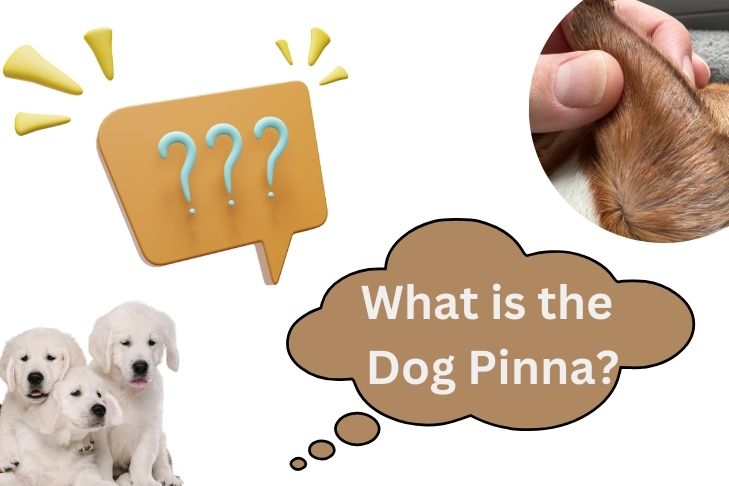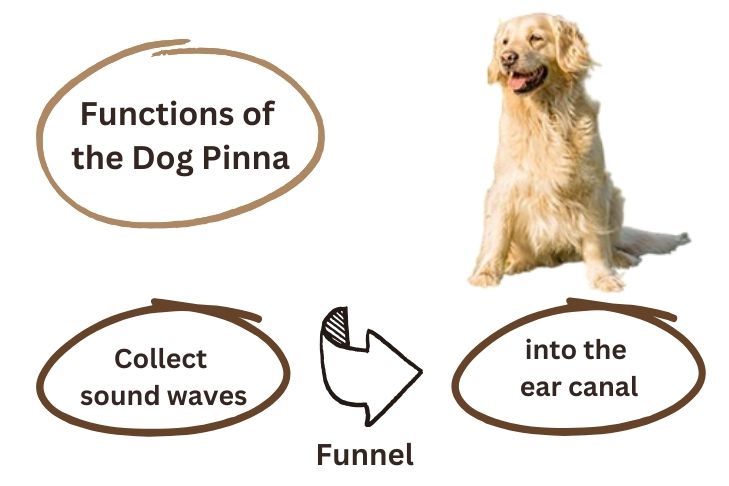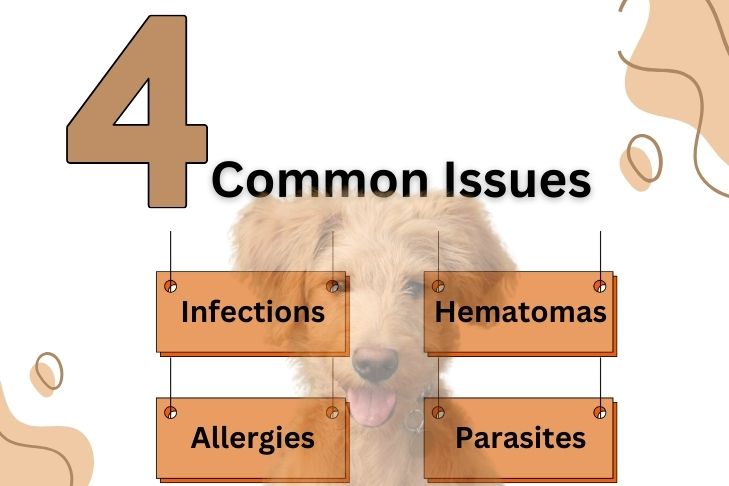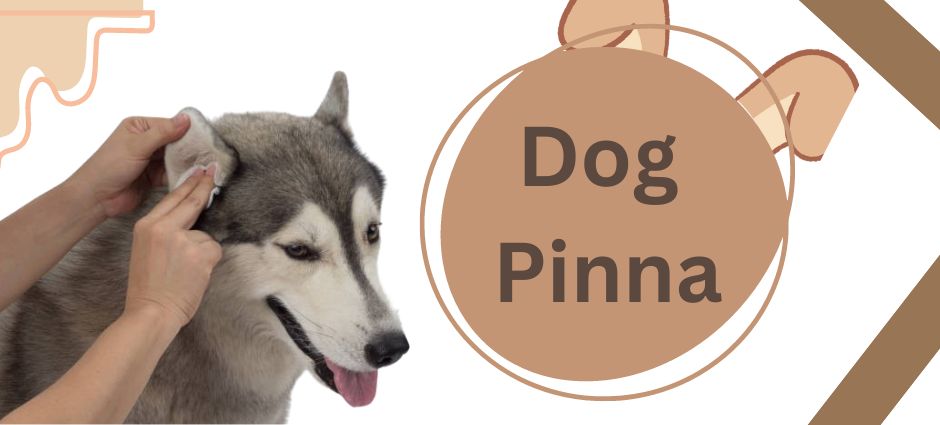When it comes to caring for our canine friend, understanding their anatomy is crucial. One often overlooks the essential part of a dog’s anatomy: the pinna (the external part of a pup’s ear).
In this comprehensive guide by Claw Hive, we’ll delve into the dog pinna, its functions, common issues, and tips for maintaining healthy ears.
So, let’s get a wing to all the information here.
What is the Dog Pinna?

If you’re still confused, the dog pinna is just the dog outer ear flap. Some breeds, like the German Shepherd, have erect ears, while others, like the Cocker Spaniel, have floppy ears.
Regardless of the shape, the pinna serves several important functions that contribute to a dog’s overall health and well-being.
Functions of the Dog Pinna

The primary function of the dog’s pinna is to collect sound waves and funnel them into the ear canal. This is essential for a dog’s acute sense of hearing, which is far more sensitive than that of humans. The pinna’s ability to move and swivel helps dogs detect the direction of sounds, aiding in their ability to locate prey or respond to their environment.
In addition to hearing, the pinna also plays a role in thermoregulation. Dogs do not have sweat glands on their skin like humans do; instead, they regulate their body temperature through panting and through areas like the pinna, where blood vessels are close to the skin. This helps to dissipate heat, especially in fluffy little dogs with large or thin ears.
Dog Pinna: Top 4 Common Issues

While the dog pinna is vital for many functions, it is also susceptible to various issues. Here are some common problems that can affect the dog pinna:
1. Infections
Dog ear pinna infections come to the top of the list which can be caused by bacteria, yeast, or mites. If your chunky dog has floppy ears, it automatically becomes more exposed to bacteria because of the moisture, which causes more infections.
2. Hematomas
Aural hematomas occur when blood vessels in the pinna burst, leading to a painful swelling. This can happen due to trauma, excessive scratching, or shaking of the head. Hematomas require veterinary attention to drain the blood and prevent a recurrence.
3. Allergies
Allergies can also affect the dog pinna, causing itching, redness, and swelling. Big white dogs may scratch their ears excessively, leading to further irritation or infections. Identifying and managing allergies, whether they are food-related or environmental, is crucial for preventing these issues.
4. Parasites
Ear mites start building up in the canal, which are basically like hair lice, but in the ear. They are tiny parasites and cause a dangerous amount of itching in dogs. Regular ear cleaning and check-ups can help prevent and detect infestations early.
Best 4 Tips To Maintain Dog Pinna Health

Proper ear care is essential for maintaining the health of your dog’s pinna. Here are some tips to ensure your dog’s ears stay in top condition:
1. Regular Cleaning
Cleaning your pup friend’s ears, like giant fluffy dog ears, regularly can help prevent infections and the buildup of wax and debris. Try not to use cotton swabs, as they can push debris further into the ear canal or damage the delicate structures inside so it’s always best to use products recommended by your vet.
2. Monitoring for Signs of Trouble
Keep an eye on your dog’s ears for any signs of problems, such as redness, swelling, discharge, or an unpleasant odor. If you notice your dog shaking its head or scratching its ears more than usual, it might be time to consult your veterinarian.
Read About: Vasculitis Dog Ear
3. Proper Grooming
For big fluffy dogs with long hair around their ears, regular grooming is important to prevent matting and tangles that can lead to irritation or infections. Trimming the hair can also improve airflow to the ear canal, reducing the risk of moisture build-up.
4. Managing Allergies
Dog allergies are also not uncommon so it’s best to talk to your vet about it beforehand. You can also come up with dietary changes or some medication to help the poor dog.
Conclusion
Understanding and caring for the dog pinna is an essential part of maintaining your dog’s overall health. By being aware of its functions and common issues, you can take proactive steps to ensure your dog’s ears stay healthy.
Regular cleaning, monitoring for signs of trouble, proper grooming, and managing allergies are key practices that can help keep your canine’s pinna in optimal condition. Always consult your veterinarian if you have any concerns about your dog’s ears to ensure prompt and appropriate care.




